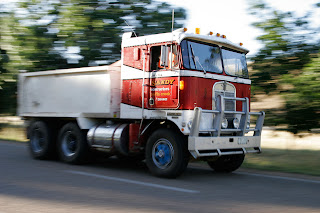
A pinwheel photographed at three different shutter speeds.
In still cameras, the term shutter speed represents the time that the shutter remains open when taking a photograph. Along with the aperture of the lens (also called f-number), it determines the amount of light that reaches the film or sensor. Conventionally, the exposure is measured in units of Exposure value or EV, sometimes called stops, representing a halving or doubling of the exposure.
Multiple combinations of shutter speed and aperture can give the same exposure: halving the shutter speed doubles the exposure (1 EV more), while doubling the aperture (halving the number) increases the exposure by a factor of 4 (2 EV). For this reason, standard apertures differ by √2, or about 1.4. Thus an exposure with a shutter speed of 1/250 s and f/8 is the same as with 1/500 s and f/5.6, or 1/125 s and f/11.
The shutter speed, or more literally exposure time, is measured in seconds, but almost universally marked as a fraction of a second. A typical exposure time for photographs taken in sunlight is 8 milliseconds, or 1/125th of a second, typically marked as 125 on a shutter speed dial or shown as 125 on a digital display.
In addition to its effect on exposure, the shutter speed changes the way movement appears in the picture. Very short shutter speeds can be used to freeze fast-moving subjects, for example at sporting events. Very long shutter speeds are used to intentionally blur a moving subject for artistic effect.[1] Short exposure times are sometimes called "fast", and long exposure times "slow".
Adjustment to the aperture controls the depth of field, the distance range over which objects are acceptably sharp; such adjustments need to be compensated by changes in the shutter speed.
In early days of photography, available shutter speeds were not standardized, though a typical sequence might have been 1/10 s, 1/25 s, 1/50 s, 1/100 s, 1/200 s and 1/500 s. Following the adoption of a standardized way of representing aperture so that each major step exactly doubled or halved the amount of light entering the camera (f/2.8, f/4, f/5.6, f/8, f/11, f/16, etc.), a standardized 2:1 scale was adopted for shutter speed so that opening one aperture stop and reducing the shutter speed by one step resulted in the identical exposure. The agreed standards for shutter speeds are:[2]
* 1/1000 s
* 1/500 s
* 1/250 s
* 1/125 s
* 1/60 s
* 1/30 s
* 1/15 s
* 1/8 s
* 1/4 s
* 1/2 s
* 1 s

Slow shutter speed combined with panning the camera can achieve a motion blur for moving objects.
With this scale, each increment roughly doubles the amount of light (longer time) or halves it (shorter time).
Camera shutters often include one or two other settings for making very long exposures:
* B (for bulb) — keep the shutter open as long as the shutter release is held
* T (for time) — keep the shutter open until the shutter release is pressed again
The ability of the photographer to take images without noticeable blurring by camera movement is an important parameter in the choice of slowest possible shutter speed for a handheld camera. The rough guide used by most 35 mm photographers is that the slowest shutter speed that can be used easily without much blur due to camera shake is the shutter speed numerically closest to the lens focal length. For example, for handheld use of a 35 mm camera with a 50 mm normal lens, the closest shutter speed is 1/60 s. This rule can be augmented with knowledge of the intended application for the photograph, an image intended for significant enlargement and closeup viewing would require faster shutter speeds to avoid obvious blur. Through practice and special techniques such as bracing the camera, arms, or body to minimize camera movement longer shutter speeds can be used without blur. If a shutter speed is too slow for hand holding, a camera support — usually a tripod — must be used. Image stabilization can often permit the use of shutter speeds 3–4 stops slower (exposures 8–16 times longer).
Shutter priority refers to a shooting mode used in semi-automatic cameras. It allows the photographer to choose a shutter speed setting and allow the camera to decide the correct aperture. This is sometimes referred to as Shutter Speed Priority Auto Exposure, or Tv (time value) mode.
Source : http://en.wikipedia.org/wiki/Shutter_speed
No comments:
Post a Comment